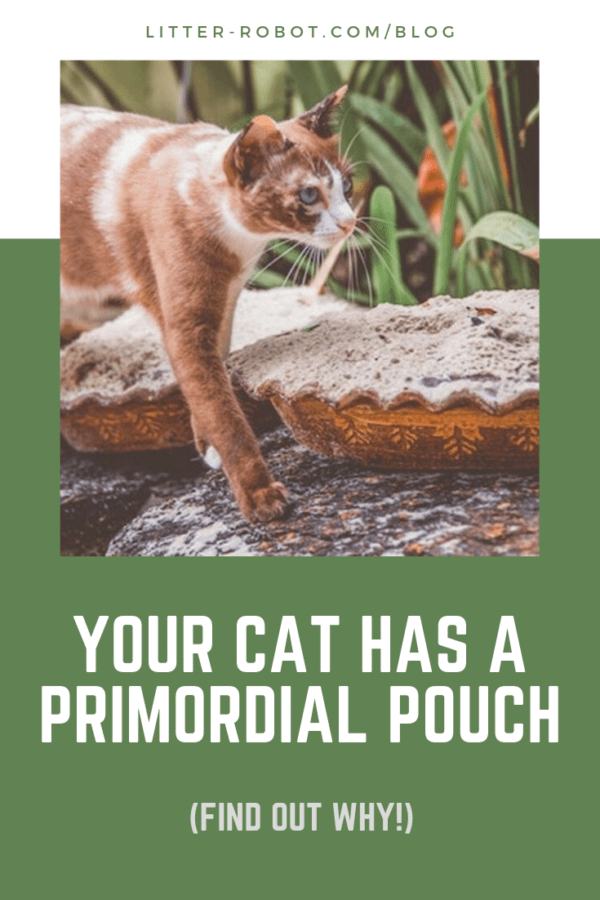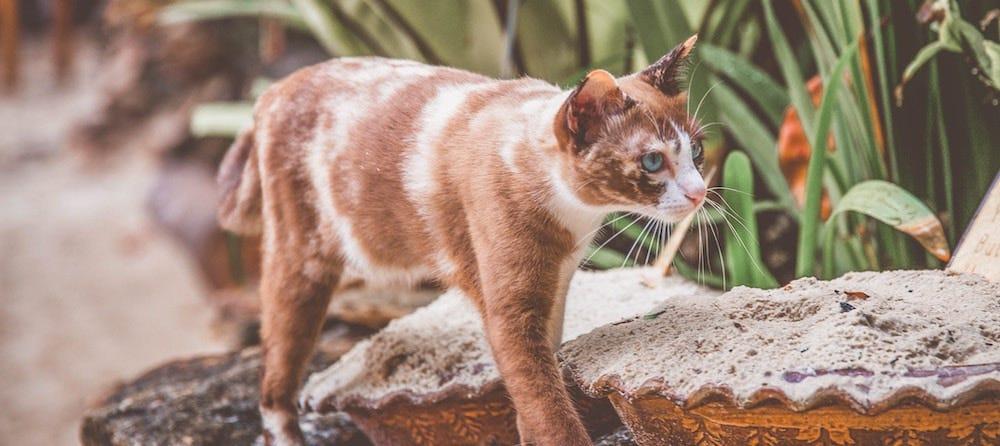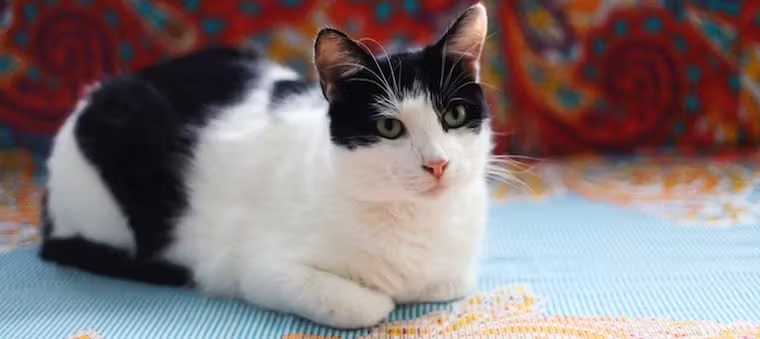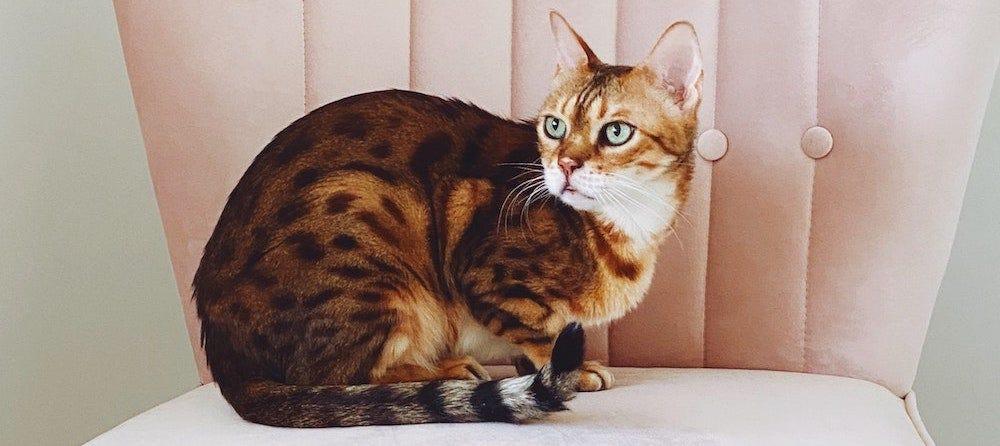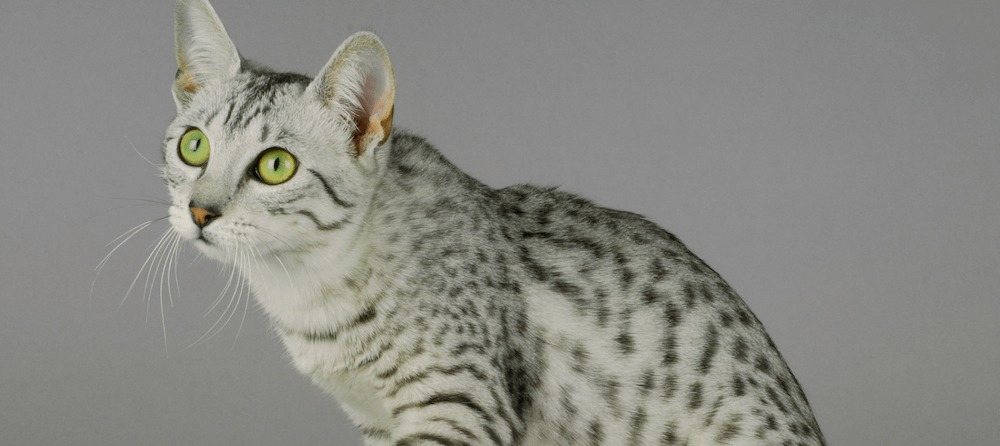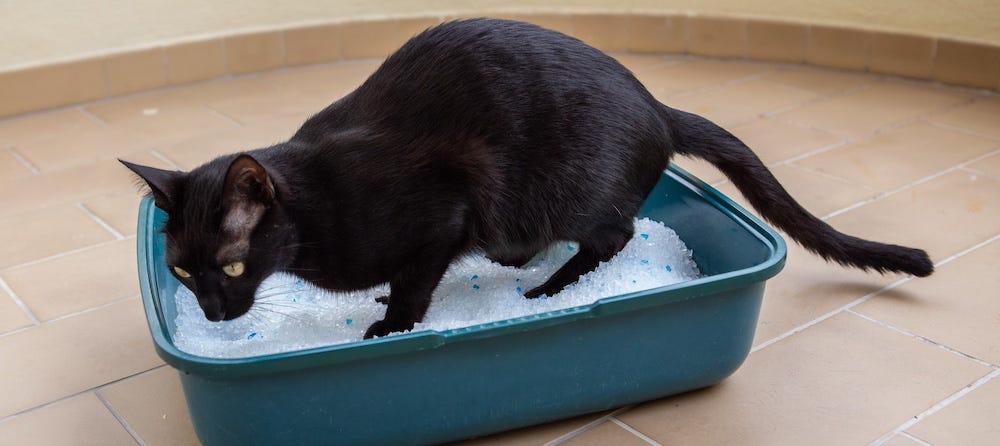When is a flabby belly not a flabby belly? When it’s a primordial pouch. Unfortunately, humans can’t use this excuse, but cats sure can! Find out what a primordial pouch is and why your cat has one.
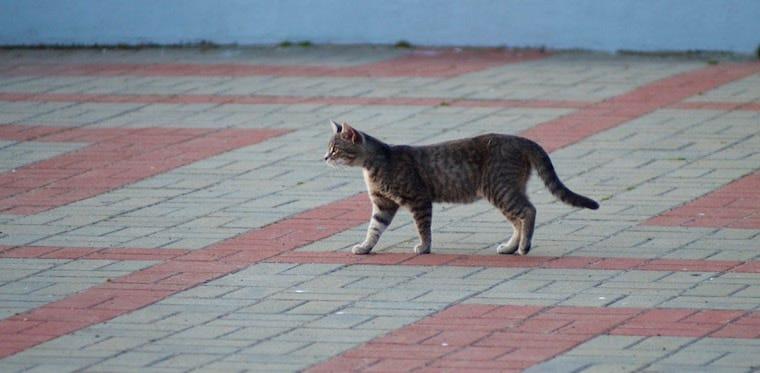
What is a primordial pouch?
Have you ever noticed that even the slimmest feline has a slight hanging belly? This saggy layer of skin (typically covered in fur) is called the primordial pouch, and it’s a normal part of your cat’s anatomy. It is located along the length of the stomach but tends to be most noticeable closer to the rear.
All felines have this abdominal flap, although it varies in size from cat to cat. The pouch may sway from side to side when your cat walks, or subtly jiggle. It tends to be more pronounced in older cats or formerly overweight felines. Even big cats like lions and tigers have a primordial pouch.
What is the purpose of the primordial pouch?
Experts believe the cat primordial pouch evolved for several reasons, but three general theories are widely accepted.
Protection
One purpose of this abdominal flap is to protect a feline’s sensitive lower belly during fights with predators and other cats—particularly from that adorable yet ferocious secret weapon, the “bunny kick.” In a serious skirmish, the primordial pouch shields vital organs from sharp tearing claws.
Stretching
This extra bit of cat belly may also aid in your feline’s running abilities: The primordial pouch allows cats to stretch out farther while taking long strides.
Storing food
Didn’t know you had a little bear running around the house, did you? Experts surmise that another reason cats have a primordial pouch is that their wildcat ancestors needed a stretchy stomach to gorge themselves and store food for a while. Unlike our overindulged furbabies, wildcats (as well as many strays and ferals) don’t know when their next meal will present itself.
So my cat isn’t overweight?
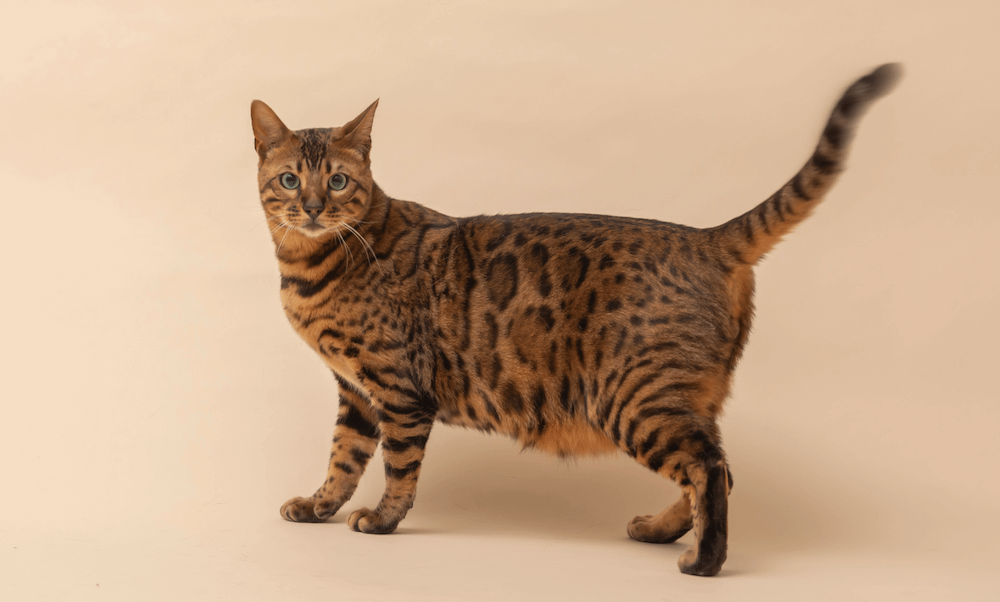
Your cat may have an obvious primordial pouch but not be overweight. So how do you tell the difference between a cat with a large primordial pouch and a cat that is simply overweight?
According to South Boston Animal Hospital, “The primordial pouch is looser, lower, and swings easily as cats walk. Obese cats will have a rounder tummy that doesn't sway when it walks… The area will feel like a hard bean bag.”
When in doubt, schedule an appointment with your veterinarian—an essential part of your cat’s physical exam is the body condition score, or BCS. In evaluating the BCS, your vet will take into account your cat’s muscle and fat distribution in the context of your cat's whole body to determine if their BCS is ideal, which is a 4-5 on the scale out of 9, or overweight.
If interested in keeping tabs on this at home, if your cat’s ribs can be felt but are not highly visible, and she has a clear waistline when viewed from above, she is likely at an ideal weight—with a little extra belly hang. However, if your cat has a round belly along with a distinct layer of fat over the ribs and no clear waistline, she may indeed be overweight. Learn more about what constitutes a healthy cat weight.
The primordial pouch myth
Some pet owners mistakenly believe that only cats that have been neutered or spayed develop a primordial pouch. This simply isn’t true—you’ll find a telltale cat belly on any feline, intact or not.
Cat breeds known for the pouch
The primordial pouch is more visible in certain cat breeds—especially those that resemble their exotic ancestors—and is even considered a breed standard in some cases.
Egyptian Mau
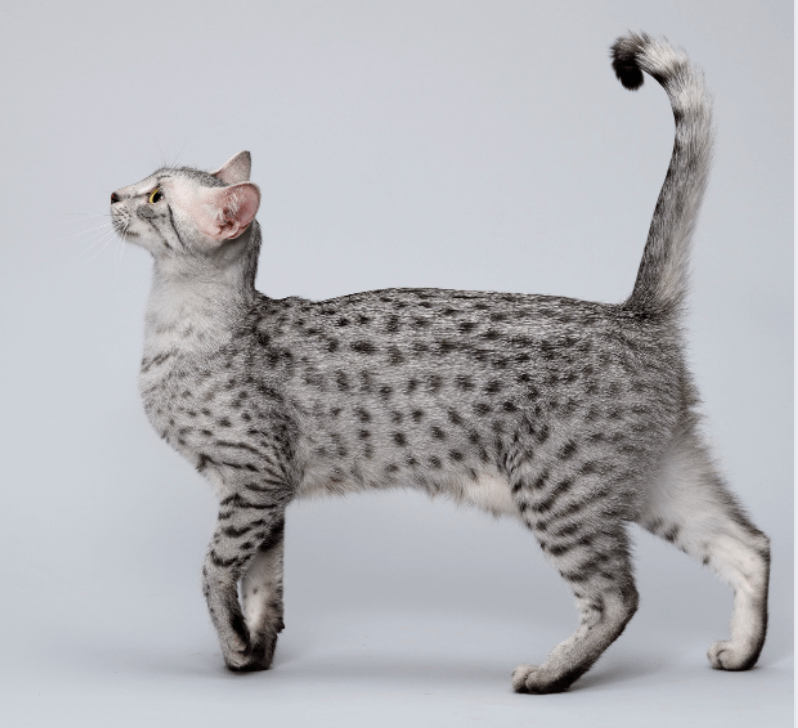
The Egyptian Mau is the only naturally spotted breed of domestic cat. This cat’s ancestors are visible all over ancient Egyptian artwork. The primordial pouch along with the flap of skin extending from the posterior end of the ribcage to the hind leg give the Mau an uncanny leaping ability, making this breed capable of running up to 30 mph!
While it can’t be confirmed that the Egyptian Mau cat that we all know and love is the cat that ancient Egyptians worshiped, it’s fun to assume that they are. These high-energy cats will meet and greet you at the door when you come home from work or bring you toys to play fetch. They have a wild side, and they can become bored and potentially mischievous if they don’t get enough energy out.
Bengal
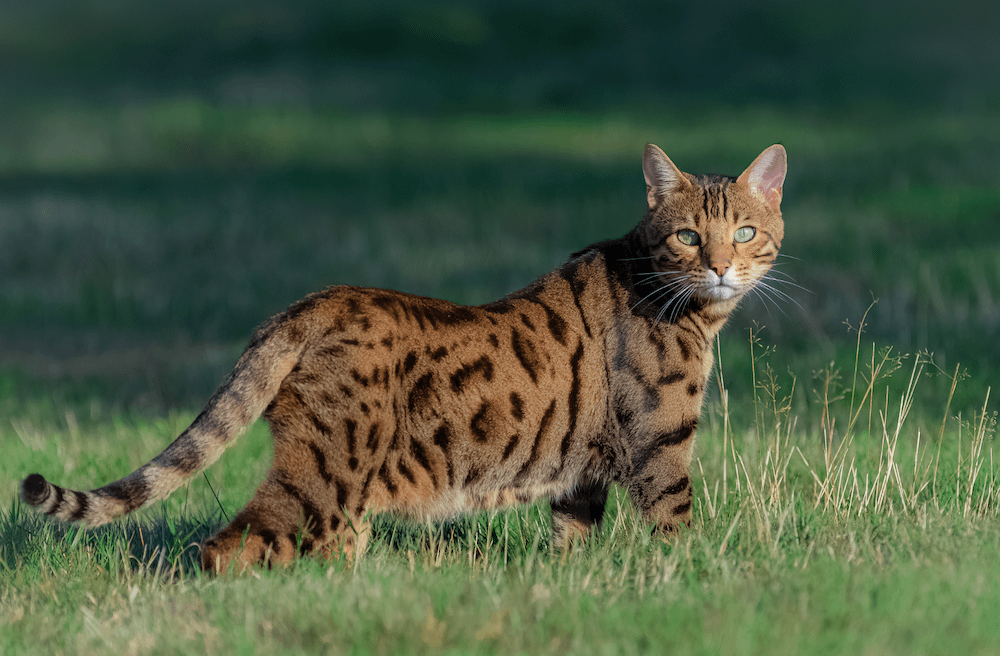
The Bengal cat is a cross between an Asian Leopard cat and a domestic cat. This wild parentage is responsible for the Bengal’s esteemed spotted coat, while the domestic lineage gives us the friendly, not-so-wild cat breed we know today. Leopard cats have a larger primordial pouch that helps them glide through the air in the wild, and when passed down through mating, the pouches on Bengal cats have remained larger than other breeds.
Bengal cats love to play and be entertained. You should have ample space for your Bengal to run around, climb, hide, and pounce, as well as plenty of toys for your Bengal to choose from. While they are good at entertaining themselves, they might cause mayhem if left to their own devices for long periods of time.
Pixie-bob
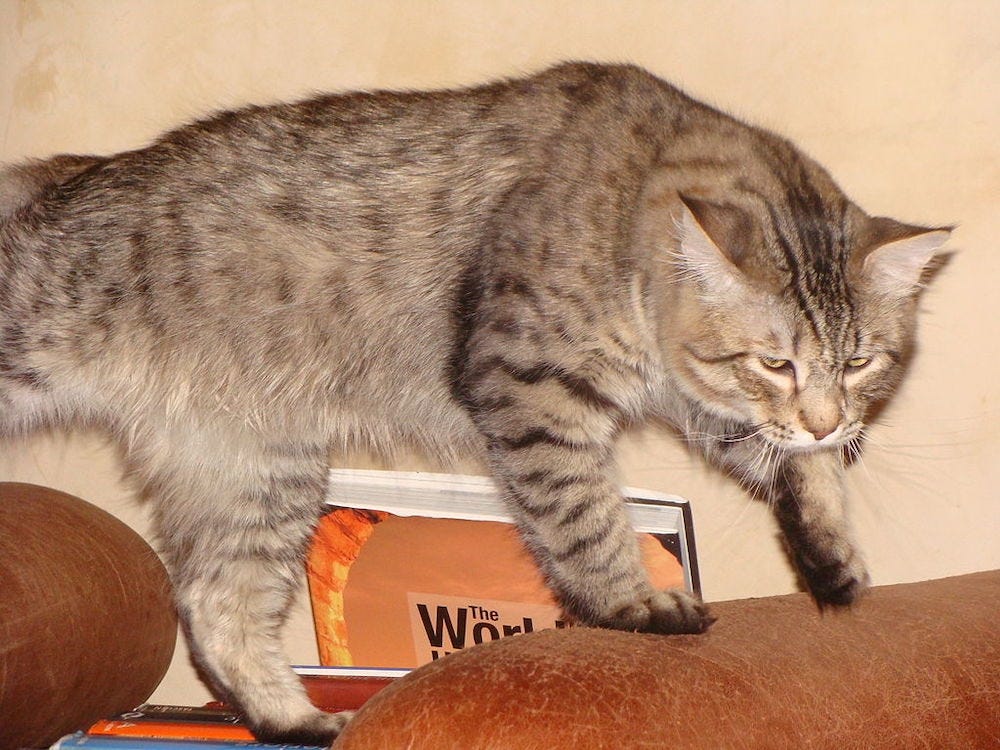
The Pixie-bob is a muscular, brawny cat bred to resemble the wild bobcats found in the coastal mountains of the western U.S. This breed has a tail mutation and is often polydactyl. Despite the resemblance, no captive American bobcats were ever used in establishing the Pixie-bob breed, so the Pixie-bobs we know and love today don’t have wildcat blood running through them.
These medium- to large-sized cats can have short or long coats that shed quite a bit. Their thick fur usually can’t mask the pronounced primordial pouch, however. They are active housecats that make good playmates. As much as they love energetic interactions with their humans, they are happy to relax at the end of the day. Talk about the best of both worlds!
Japanese Bobtail
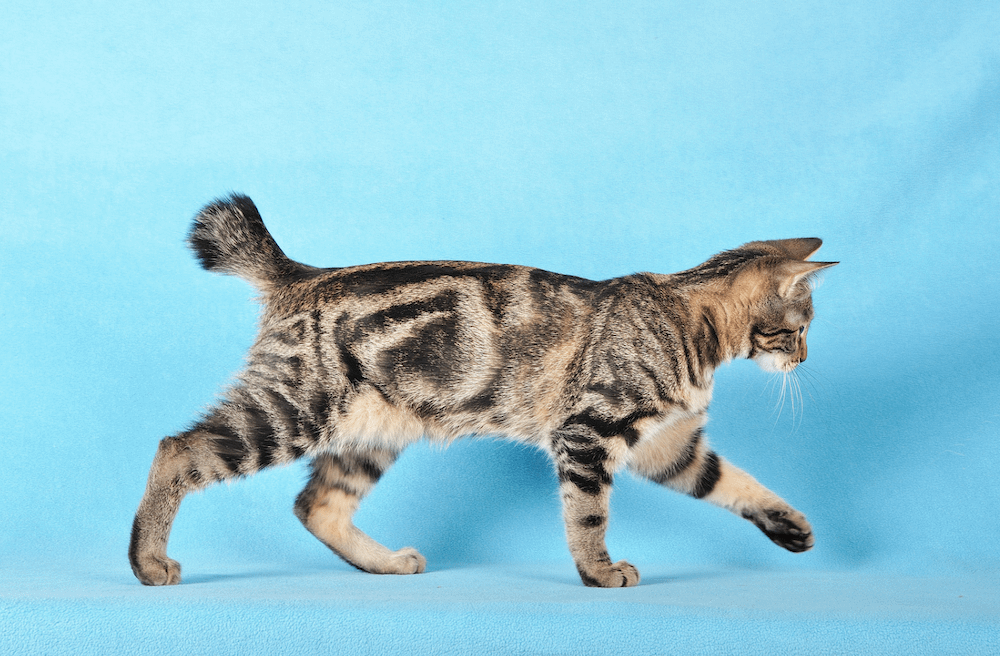
The Japanese Bobtail is another short-tailed kitty known for their primordial pouch. Like the Egyptian Mau, this breed’s hind legs are longer than their front legs. Their short, tufted “bunny tails” form as the result of a natural mutation. Besides the bob, this breed is best recognized for their white calico patterns— largely due to their associations with the Japanese “lucky cat” figurine, Maneki Neko.
These social, intelligent cats rely on their humans and love to learn new ways to interact with them, including puzzles, playing fetch, chasing lasers, and learning tricks. Your Japanese Bobtail will follow you around, interrupt your business, and chirp at you when they are looking for attention or just want to seem agreeable.
Now that you know about the primordial pouch, you’ll never look at your cat—or at least her swaying cat belly—the same way again!
Embrace a better life with cats with a self-cleaning litter box.
Photo credits:
- Cover photo by Tuva Mathilde Løland on Unsplash
- Pixie-bob: © Gertrud Keazor / CC-BY-3.0
Source:
